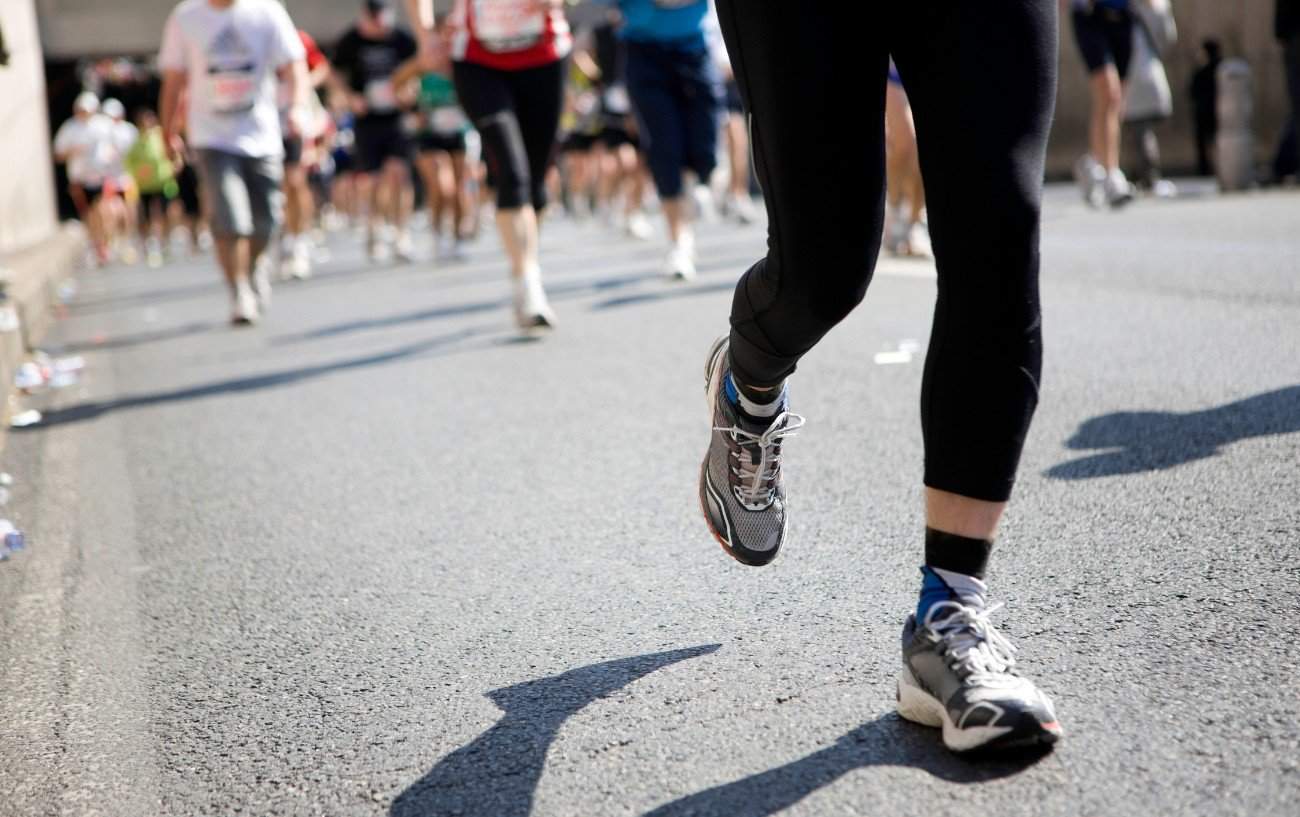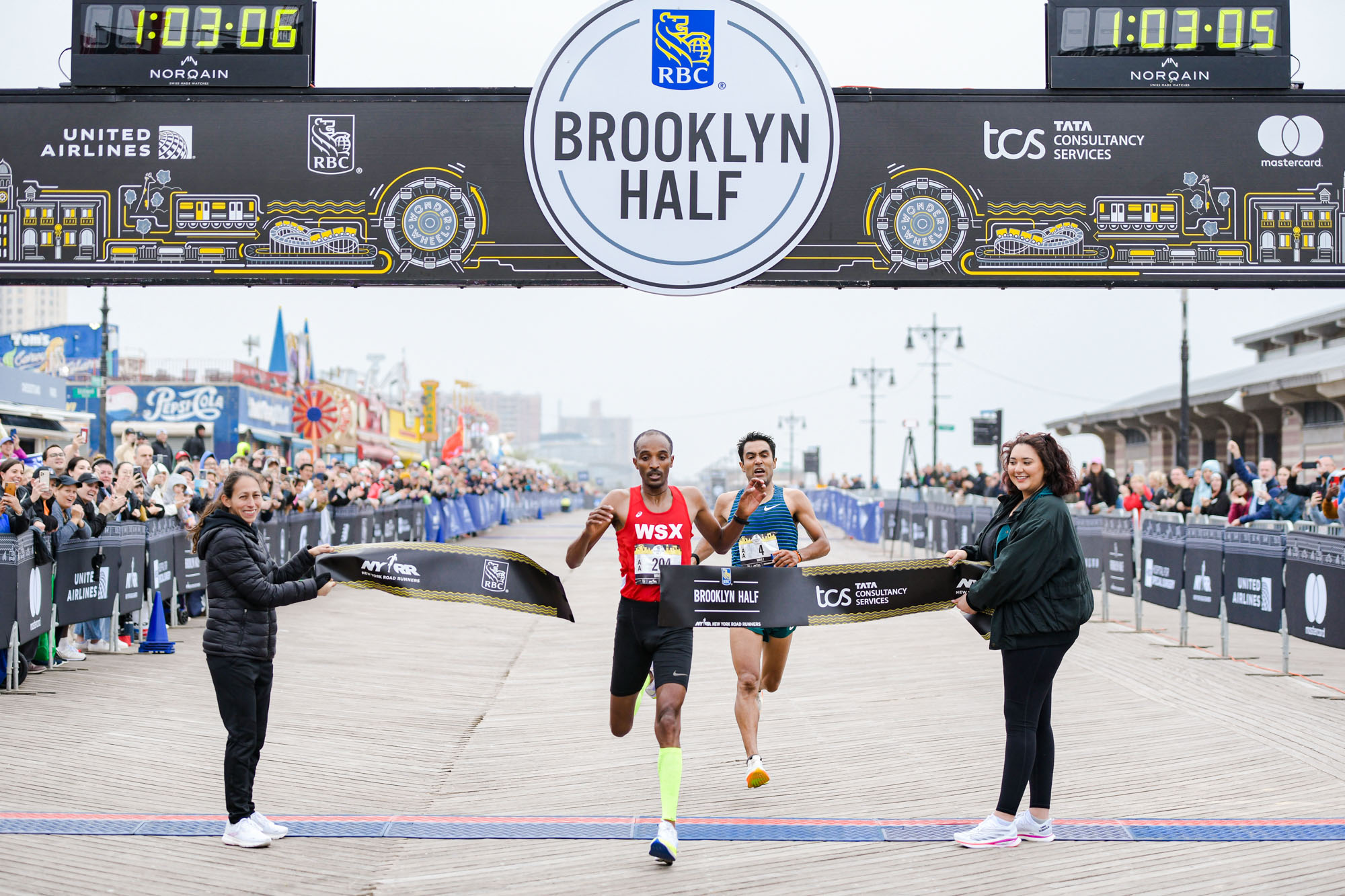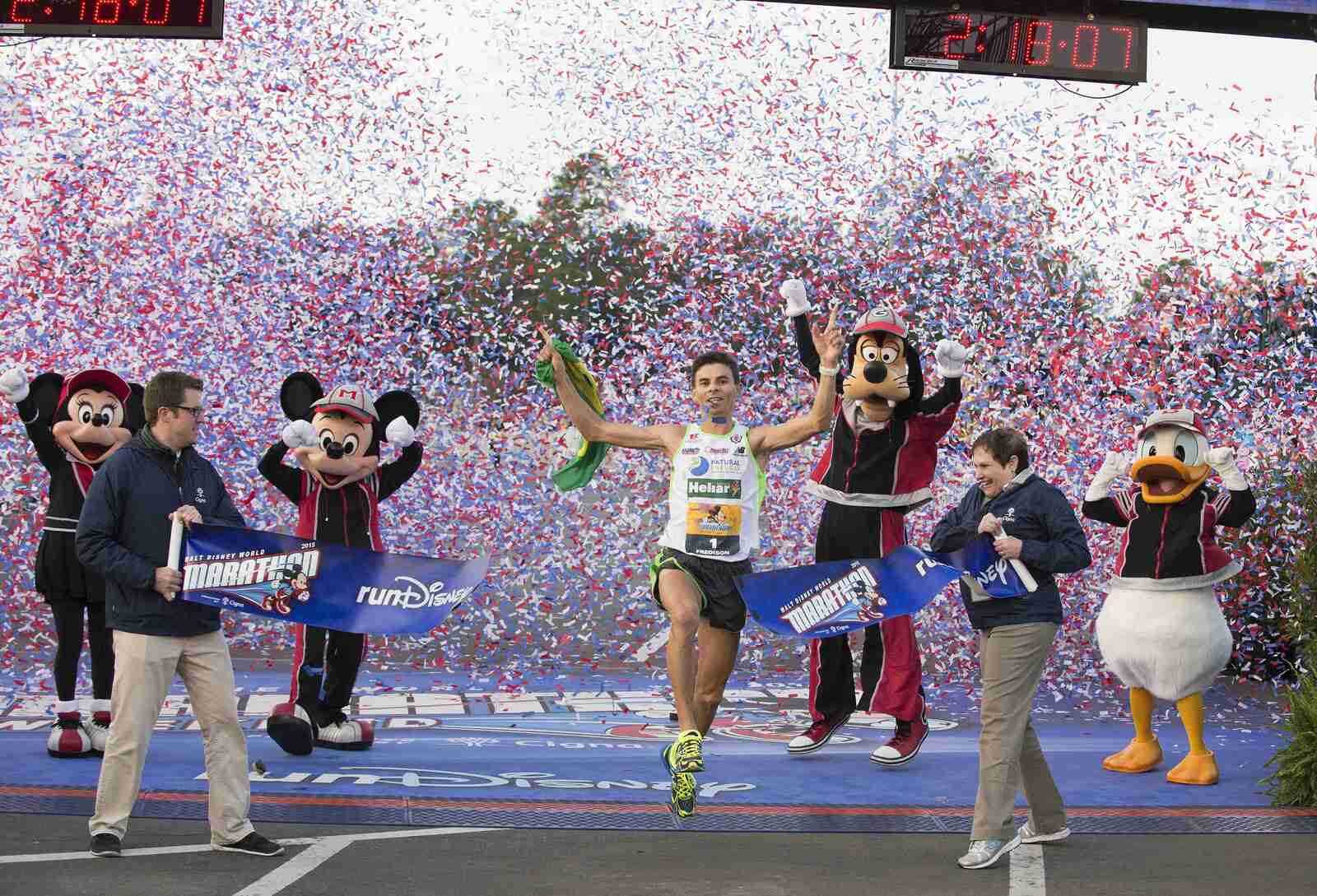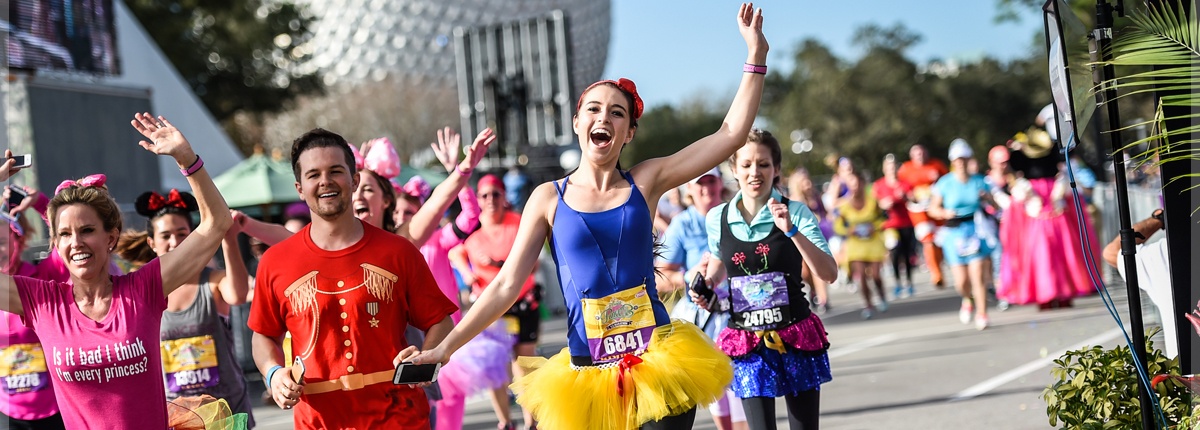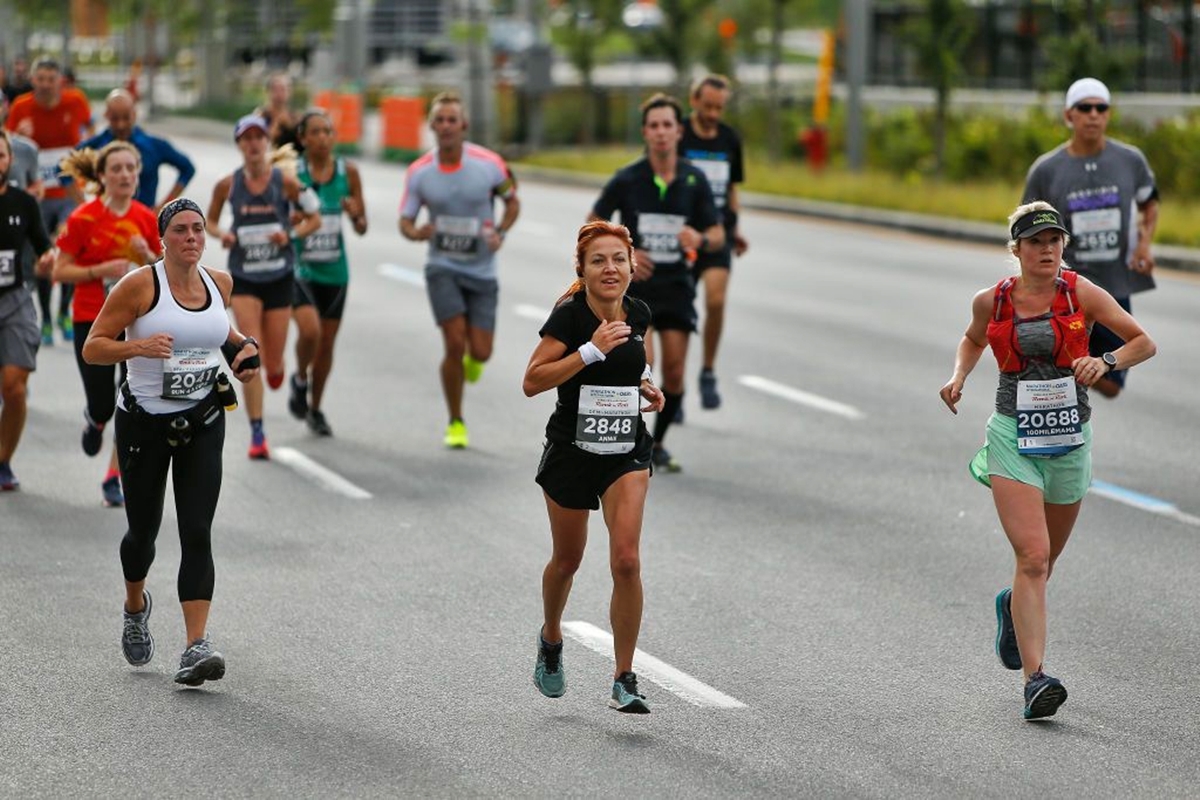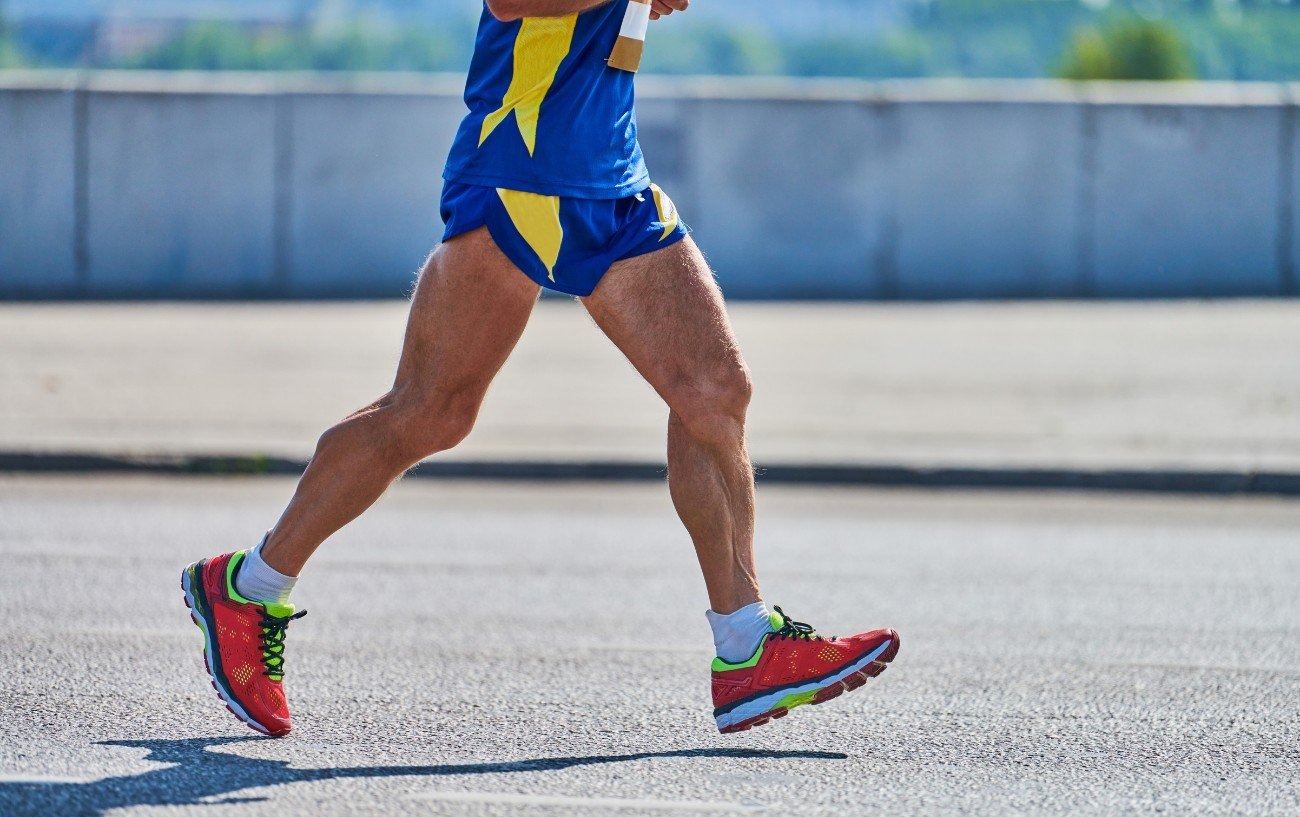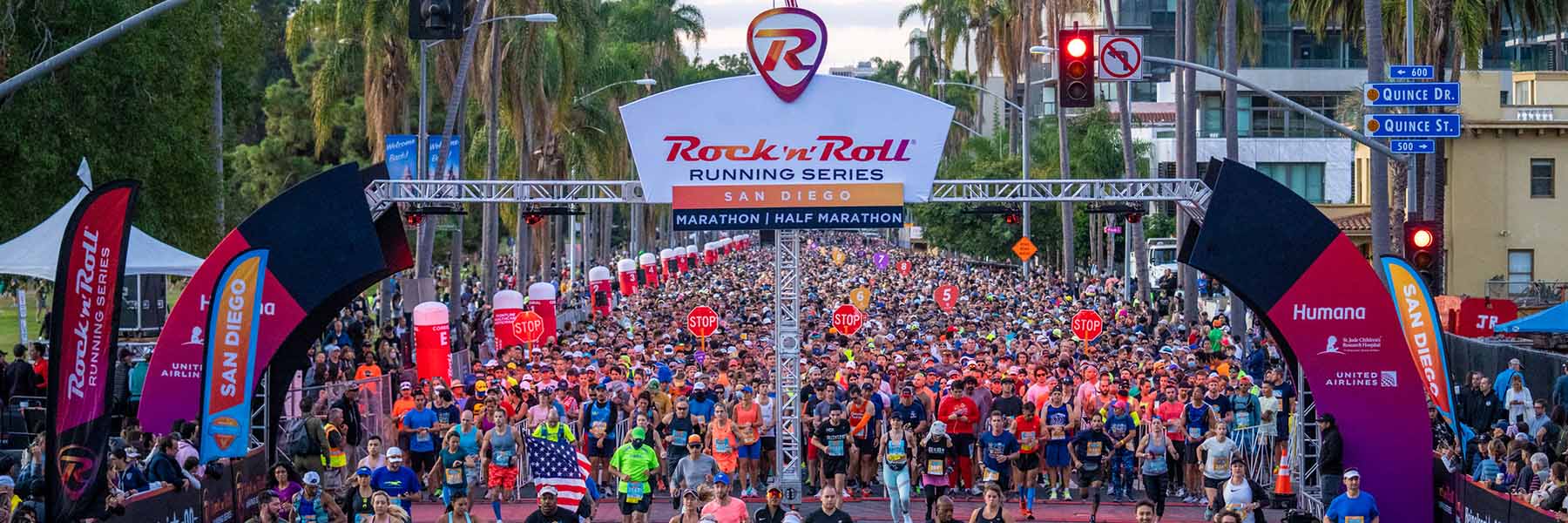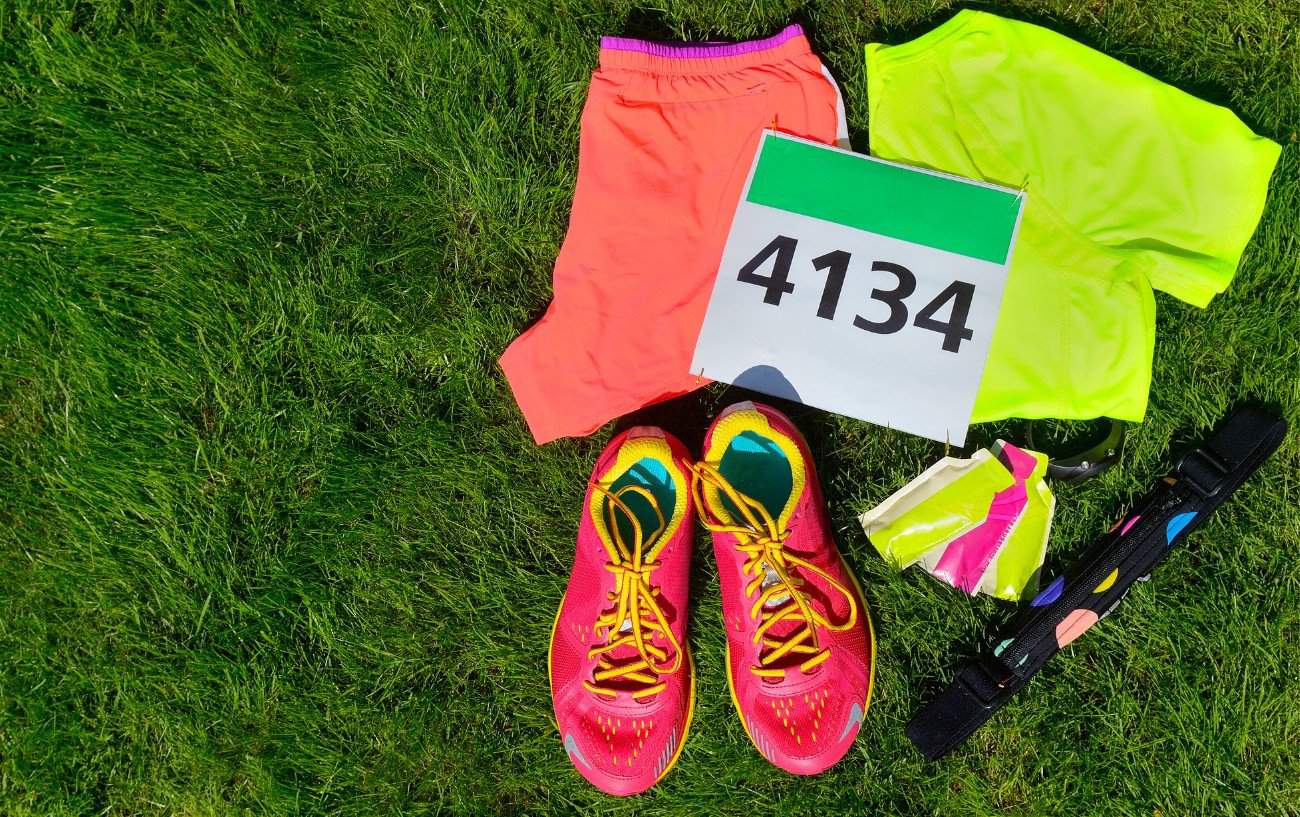

Featured
How Soon To Run After Half Marathon
Modified: August 21, 2023
Get expert advice on how soon to run after a half marathon. Find out when it's safe to start running again and avoid injuries. Featured article.
Introduction
Completing a half marathon is a significant achievement that requires months of training and dedication. Whether you are a seasoned runner or a first-time participant, it is important to remember that the real challenge begins after crossing the finish line. Proper recovery is crucial to ensuring your body and mind fully heal and prepare for future running endeavors.
After pushing your limits during a half marathon, your body goes through a strenuous process of repairing damaged muscle tissues, replenishing energy stores, and restoring balance. Neglecting the recovery phase can increase the risk of injury and leave you feeling fatigued for an extended period of time.
In this article, we will explore the importance of recovery after a half marathon and discuss the factors to consider when determining how soon to resume running. We will delve into both the physical and mental aspects of recovery, while emphasizing the significance of listening to your body’s cues throughout the process.
Remember, recovery is not a one-size-fits-all approach. It varies from person to person and depends on various factors such as training history, fitness level, race experience, and individual goals. By understanding the fundamentals of post-half marathon recovery, you can make informed decisions that promote long-term health and running success.
Importance of Recovery
Recovery is an essential part of any training program, including after completing a half marathon. It allows your body to repair, rebuild, and adapt to the physical stress it endured during the race. Neglecting proper recovery can lead to overtraining, decreased performance, and an increased risk of injury.
One of the primary purposes of recovery is to allow your muscles and tissues time to repair themselves. Running a half marathon places a significant amount of stress on your body, causing micro-tears in the muscle fibers. The recovery period gives these muscles a chance to heal, grow stronger, and adapt to the increased workload.
Furthermore, recovery plays a crucial role in replenishing energy stores. During a half marathon, your body relies heavily on glycogen, which is stored in the muscles and liver, as a source of fuel. Replenishing these glycogen stores is vital for optimal performance in future training sessions and races.
In addition to physical recovery, it is important to address the mental aspect. Running a half marathon takes a toll on your mind as well. The intense focus, determination, and mental stamina required for the race can leave you mentally drained. Taking time to rest and recover allows you to recharge mentally, ensuring that you return to running with a refreshed mindset.
Overall, the importance of recovery cannot be overstated. It is a critical component of any training plan and should not be neglected. By prioritizing recovery, you give your body and mind the necessary time and resources to heal, adapt, and be ready for future challenges.
Factors to Consider
When determining how soon to run after a half marathon, there are several factors to consider. It’s essential to take these factors into account to ensure a safe and effective recovery process:
- Training History: Consider your training history leading up to the half marathon. If you have consistently followed a training plan and have a solid running base, you may be able to recover more quickly. However, if you have had inconsistent training or are new to running, it is essential to allow for a more extended recovery period.
- Physical Condition: Assess your physical condition after the race. Take note of any muscle soreness, joint pain, or other signs of overexertion. If you experience severe pain or injury, it is crucial to consult with a healthcare professional before resuming running.
- Race Performance: Consider how you performed during the half marathon. If you pushed yourself to your limits and experienced a significant level of fatigue, it may be necessary to allow for more recovery time. On the other hand, if you finished the race feeling strong and relatively fresh, you may be able to resume running sooner.
- Individual Goals: Take into account your future running goals. If you have another race coming up soon, you might need to adjust your recovery timeline to allow for adequate training leading up to the next event. Conversely, if you have no immediate racing plans, you may have more flexibility in your recovery schedule.
- Overall Health: Consider your overall health and immune system function. Running a half marathon can temporarily suppress your immune system, making you more susceptible to illness. It’s crucial to listen to your body and allow for additional rest if you feel run down or experience any signs of illness.
Keep in mind that these factors are general guidelines, and individual recovery rates may vary. It’s essential to be adaptable and listen to your body’s signals during the recovery process. Remember that the goal is to promote long-term health and prevent injury, so err on the side of caution if in doubt about resuming running too soon.
Physical Recovery
Physical recovery after a half marathon involves allowing your body to repair and rebuild itself. Here are some strategies to promote physical recovery:
- Rest and Sleep: Ensure you prioritize rest and get sufficient sleep. Sleep is crucial for the body’s healing process and aids in muscle repair and growth.
- Active Recovery: Engage in light physical activities such as walking or gentle stretching. This promotes blood circulation, helps flush out metabolic waste, and aids in reducing muscle soreness.
- Ice and Heat Therapy: Apply ice packs or take ice baths to reduce inflammation and soothe sore muscles. Additionally, heat therapy through warm showers or heating pads can help relax tight muscles and improve blood flow.
- Compression and Elevation: Wearing compression garments and elevating your legs after the race can assist in reducing swelling and improving blood circulation.
- Massage and Myofascial Release: Consider getting a professional sports massage or using a foam roller to release tension, promote muscle recovery, and alleviate tightness.
- Gradual Return to Running: Start by incorporating short, easy runs or walk-run intervals into your routine. Listen to your body’s feedback and avoid pushing too hard too soon.
Remember that everyone’s recovery process is unique, and it is important to respect your body’s signals. Gradually increase intensity, duration, and frequency of runs as your body adjusts and heals. Be mindful of any persistent pain or symptoms of injury and seek professional medical advice if necessary.
Mental Recovery
Mental recovery is just as important as physical recovery after a half marathon. Here are some strategies to aid in your mental recovery:
- Reflect and Celebrate: Take time to reflect on your accomplishment and celebrate your hard work. Acknowledge the effort you put into training and completing the half marathon, and appreciate your progress and achievements.
- Set New Goals: Use the post-race period as an opportunity to set new running goals. Having something to look forward to can help maintain your motivation and ensure a smooth transition back into training.
- Engage in Cross-Training: Incorporate other activities you enjoy into your routine, such as swimming, cycling, yoga, or strength training. This variety can provide a mental break from running while still maintaining your fitness level.
- Mindfulness and Meditation: Practice mindfulness and meditation techniques to reduce stress, increase mental clarity, and promote relaxation. This can help you detach from any performance-related pressures and restore mental balance.
- Join a Running Community: Connect with other runners through local run clubs or online communities. Sharing experiences, advice, and support with fellow runners can help you regain motivation and keep you mentally engaged in the sport.
- Take a Digital Detox: Limit your time spent on social media or tracking apps that may contribute to comparison or performance anxiety. Instead, focus on your personal journey and celebrate your progress without external distractions.
Remember that mental recovery is an ongoing process, and it is normal to experience post-race blues or a temporary lack of motivation. Give yourself patience and compassion during this period, and trust that your passion for running will be reignited at the right time.
Listening to Your Body
One of the most important aspects of post-half marathon recovery is listening to your body. Every individual is unique, and your body will provide cues and signals that indicate the appropriate time to resume running. Here are some considerations:
- Pain and Discomfort: Pay attention to any lingering pain or discomfort after the half marathon. It is normal to experience muscle soreness and fatigue, but if you experience sharp or persistent pain, it may be a sign that you need more time to recover.
- Energy Levels: Assess your energy levels throughout the day. If you still feel excessively fatigued or lack the energy to engage in your regular activities, it may be an indication that you need more rest before returning to running.
- Quality of Sleep: Take note of the quality of your sleep. If you are having trouble sleeping or wake up feeling unrested, it could be a sign that your body needs more time to recover.
- Mental Readiness: Evaluate your mental readiness to return to running. If the thought of lacing up your shoes and going for a run does not excite you or if you feel anxious about it, it may be a sign that you need more time to recharge mentally.
- Overall Well-being: Consider your overall well-being. If you are experiencing any signs of illness or if your immune system feels compromised, it is crucial to prioritize rest and recovery before resuming running.
Trust your intuition and instincts when it comes to resuming running. While it is essential to have discipline and dedication in your training, it is equally important to prioritize your health and well-being. Pushing through when your body is not ready can lead to further injury and setbacks.
Remember that recovery is not a linear process, and it may take longer than expected. Be patient with yourself and focus on the long-term benefits of proper recovery. By listening to your body and giving it the rest it needs, you will come back stronger and ready to tackle new running goals.
Gradual Return to Running
When it’s time to resume running after a half marathon, it is important to do so gradually. Rushing back into intense training too soon can increase the risk of injury and hinder your long-term progress. Here are some tips for a successful and gradual return to running:
- Start Slow: Begin with short, easy runs or walk-run intervals. This allows your body to reacclimate to the impacts of running and helps prevent overexertion.
- Listen to Your Body: Pay attention to any pain, discomfort, or fatigue during and after your runs. If you experience any unusual or persistent symptoms, it may be a sign that you need more time to recover.
- Increase Duration and Intensity Gradually: Slowly increase the duration and intensity of your runs over time. Add a few minutes to your runs or introduce some light speed or hill workouts as your body adapts and gets stronger.
- Alternate Running Days: Initially, consider alternating running days with rest or cross-training days to give your body ample time to recover. This helps prevent overuse injuries and allows your muscles to adapt gradually.
- Pay Attention to Form: Focus on maintaining good running form during your return. Proper posture, cadence, and foot strike can help minimize the risk of injury and improve efficiency.
- Include Active Recovery Days: Incorporate active recovery days in your training schedule. On these days, engage in low-impact activities such as swimming, cycling, or yoga to promote blood circulation and aid in muscle recovery.
- Rebuild Mileage Slightly: Gradually increase your weekly mileage by no more than 10%. This conservative approach allows your body to adapt to the increased workload and reduces the risk of overtraining.
- Stay Consistent and Patient: Consistency is key, but be patient with your progress. It takes time for your body to fully recover and regain its pre-race fitness level. Trust the process and avoid comparing yourself to others or your previous performance.
Remember, the goal is to build a strong foundation for future training and races. Gradually increasing your running volume and intensity will help minimize the risk of injury and set you up for long-term success in your running journey.
Cross Training
Cross training is a valuable component of post-half marathon recovery as it allows you to engage in different activities that complement your running routine. Here are some benefits of cross training and some popular cross-training options:
- Allows Muscles to Rest: Cross training gives your running muscles a chance to rest and recover while still maintaining your cardiovascular fitness level.
- Reduces Injury Risk: Engaging in low-impact activities like swimming, cycling, or elliptical training can help diversify the stress placed on your body and reduce the risk of overuse injuries common in running.
- Builds Overall Strength and Stability: Cross training activities such as weightlifting, Pilates, or yoga can help strengthen muscles that may not be targeted as much during running. This can improve overall functional strength and stability, contributing to better running performance.
- Improves Flexibility and Mobility: Activities like yoga or stretching routines can help improve flexibility and mobility, leading to better running form and reduced risk of injury.
- Mental Refreshment: Cross training provides a mental break from the repetitive nature of running. Trying new activities and challenges can rejuvenate your enthusiasm and motivation for running.
When choosing cross-training activities, consider ones that align with your interests, abilities, and specific recovery needs. Remember to start slowly, especially with new activities, to avoid any potential overexertion. Gradually increase the duration and intensity of your cross-training sessions over time.
Incorporate cross-training into your weekly routine, aiming for 2-3 sessions alongside your running days. Be mindful of balancing your training load and ensuring adequate rest for optimal recovery.
Remember that cross training should complement your running, not replace it entirely. While cross training can provide important benefits, maintaining a consistent running routine remains essential for improving running-specific fitness and performance.
Stretching and Foam Rolling
Stretching and foam rolling are valuable practices that can aid in post-half marathon recovery by promoting muscle flexibility, reducing muscle soreness, and improving overall mobility. Here’s how you can incorporate stretching and foam rolling into your recovery routine:
- Pre-Run Dynamic Stretching: Before your runs, engage in dynamic stretching exercises to warm up your muscles and increase blood flow. Dynamic stretches involve moving through a range of motion and can help improve flexibility and prepare your body for the run.
- Post-Run Static Stretching: After your runs, perform static stretches to target major muscle groups. Hold each stretch for 15-30 seconds, focusing on areas such as the hamstrings, quadriceps, calves, and hips. Static stretching can help improve flexibility and reduce muscle tightness post-exercise.
- Foam Rolling: Foam rolling is a form of self-massage that uses a firm foam roller to release muscle tension and trigger points. Roll over targeted muscles slowly and apply gentle pressure to alleviate tightness and knots. Foam rolling can help improve muscle recovery, increase blood flow, and reduce the risk of injuries.
- Targeted Mobility Exercises: Include exercises that focus on improving joint mobility and flexibility, such as hip openers, ankle rotations, and shoulder stretches. These exercises can enhance your overall range of motion and help prevent muscle imbalances.
- Yoga or Pilates: Consider incorporating yoga or Pilates sessions into your recovery routine. These practices emphasize flexibility, core strength, and body awareness. They can help improve muscle balance, enhance recovery, and promote overall well-being.
Remember to perform stretching and foam rolling exercises with proper form, take deep breaths, and avoid forcing any stretches. It’s essential to listen to your body and focus on areas that feel tight or restricted. If you experience pain during any stretches or foam rolling exercises, reduce the pressure or seek guidance from a qualified professional.
By incorporating regular stretching and foam rolling into your recovery routine, you can help maintain muscle flexibility, reduce muscle soreness, and improve overall recovery from your half marathon.
Proper Nutrition and Hydration
Proper nutrition and hydration are crucial components of post-half marathon recovery. They support muscle repair, replenish energy stores, and promote overall recovery. Here are some key considerations for maintaining proper nutrition and hydration:
- Replenish Fluids: Hydrate your body by drinking enough fluids throughout the day. Aim for at least 8-10 glasses of water and increase your intake if you are sweating excessively due to exercise or hot weather conditions.
- Electrolyte Replacement: In addition to water, replenish electrolytes lost through sweat by consuming drinks or foods that contain essential electrolytes like potassium, sodium, and magnesium. This can include electrolyte-enhanced sports drinks or natural options like coconut water.
- Carbohydrate Refueling: Consume carbohydrates following your half marathon to replenish depleted glycogen stores. Include complex carbohydrates like whole grains, fruits, and vegetables in your meals to provide sustained energy for recovery and tissue repair.
- Protein Intake: Protein is essential for muscle repair and growth. Include sources of lean protein such as chicken, fish, beans, lentils, and tofu in your post-race meals to aid in the recovery process.
- Adequate Nutrient Intake: Ensure you are getting a balance of essential nutrients from a variety of food sources. Include fruits, vegetables, whole grains, and healthy fats like nuts, seeds, and avocados in your diet to provide the necessary vitamins, minerals, and antioxidants for optimal recovery.
- Timing of Meals: Eat regular, balanced meals throughout the day, including a post-workout meal or snack within 30 minutes to one hour after your run. This helps replenish glycogen stores and provides nutrients for muscle repair.
- Healthy Fats: Include sources of healthy fats in your diet such as nuts, seeds, avocados, and olive oil. These fats help reduce inflammation and provide the body with sustained energy.
Remember, nutrition and hydration requirements vary from person to person. It’s important to listen to your body’s cues and adjust your intake accordingly. Consult with a registered dietitian or sports nutritionist for personalized advice on meeting your specific nutritional needs.
Proper nutrition and hydration go hand in hand with your recovery process and can significantly impact your overall performance and well-being. By nourishing your body with the right foods and fluids, you provide it with the tools it needs to recover effectively and prepare for future challenges.
Importance of Rest
Rest is a vital component of post-half marathon recovery and should not be overlooked. Here’s why rest is important and how to incorporate it into your recovery plan:
- Muscle Repair and Growth: Rest allows your muscles to repair the micro-tears that occurred during your half marathon. It is during periods of rest that your body builds strength and endurance, enabling you to perform better in future races.
- Prevention of Overtraining: Taking adequate rest helps prevent overtraining, which can lead to decreased performance, increased risk of injury, and overall burnout. It’s important to give your body time to recover and adapt to the physical stress you put on it during training and the race.
- Hormonal Balance: Through rest, your body balances important hormones such as cortisol and testosterone. Balance in these hormones is crucial for muscle repair, energy production, and overall well-being.
- Immune System Boost: Rest is essential for the proper functioning of your immune system. Training and racing can temporarily suppress your immune system, making you more susceptible to illness. Adequate rest helps strengthen your immune system and reduces the risk of falling ill.
- Mental Rejuvenation: Resting not only benefits your body but also rejuvenates your mind. It provides an opportunity to relax, recharge, and regain mental focus. This mental rejuvenation is crucial for maintaining motivation, passion, and mental resilience in running.
- Quality Sleep: Rest includes prioritizing quality sleep. During sleep, your body undergoes important physiological processes, including muscle repair, memory consolidation, and hormone regulation. Aim for 7-9 hours of uninterrupted sleep every night to support your overall recovery.
Integrate rest into your recovery plan by incorporating rest days into your training schedule. Designate specific days where you do not engage in vigorous exercise and instead focus on recovery activities like gentle stretching, foam rolling, or meditation. Additionally, prioritize getting enough sleep each night to aid in the recovery process.
Remember that rest does not equate to complete inactivity. Light activities like walking, gentle yoga, or other low-impact exercises can still be beneficial during rest days. The key is to allow your body and mind the time they need to recover and rebuild.
By recognizing the importance of rest and integrating it into your recovery plan, you improve your chances of long-term running success, injury prevention, and overall well-being.
Conclusion
Recovering properly after a half marathon is crucial for your physical and mental well-being, as well as your long-term running success. Understanding the importance of recovery and considering various factors, such as training history, physical condition, and individual goals, will guide you in determining the appropriate timeline to resume running.
Physical recovery involves practices like rest, active recovery, stretching, and foam rolling, which aid in muscle repair and reduce the risk of injury. Mental recovery is equally important, and strategies such as reflection, goal-setting, and engaging in cross-training can rejuvenate your mindset and motivation.
Listening to your body and heeding its signals is paramount. If you experience pain, excessive fatigue, or lack of energy, allow yourself more time to recover. Gradually return to running, increasing duration and intensity over time. Include cross-training activities and prioritize proper nutrition and hydration to support recovery.
Don’t underestimate the significance of rest. It enables muscle repair, hormone balance, immune system support, and mental rejuvenation. Make rest a central part of your recovery plan and prioritize getting quality sleep each night.
Remember, proper recovery is a personalized process, and individual needs may vary. Be patient with yourself and trust your body’s ability to heal and adapt. By prioritizing recovery, you set the stage for future running achievements and long-term health.
